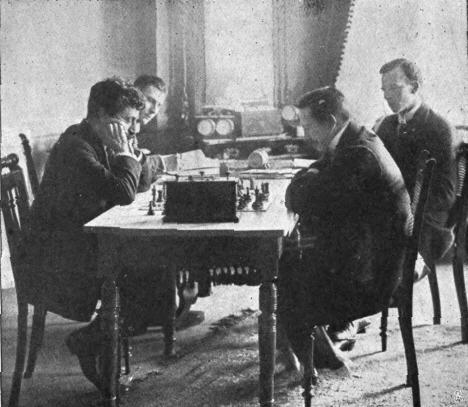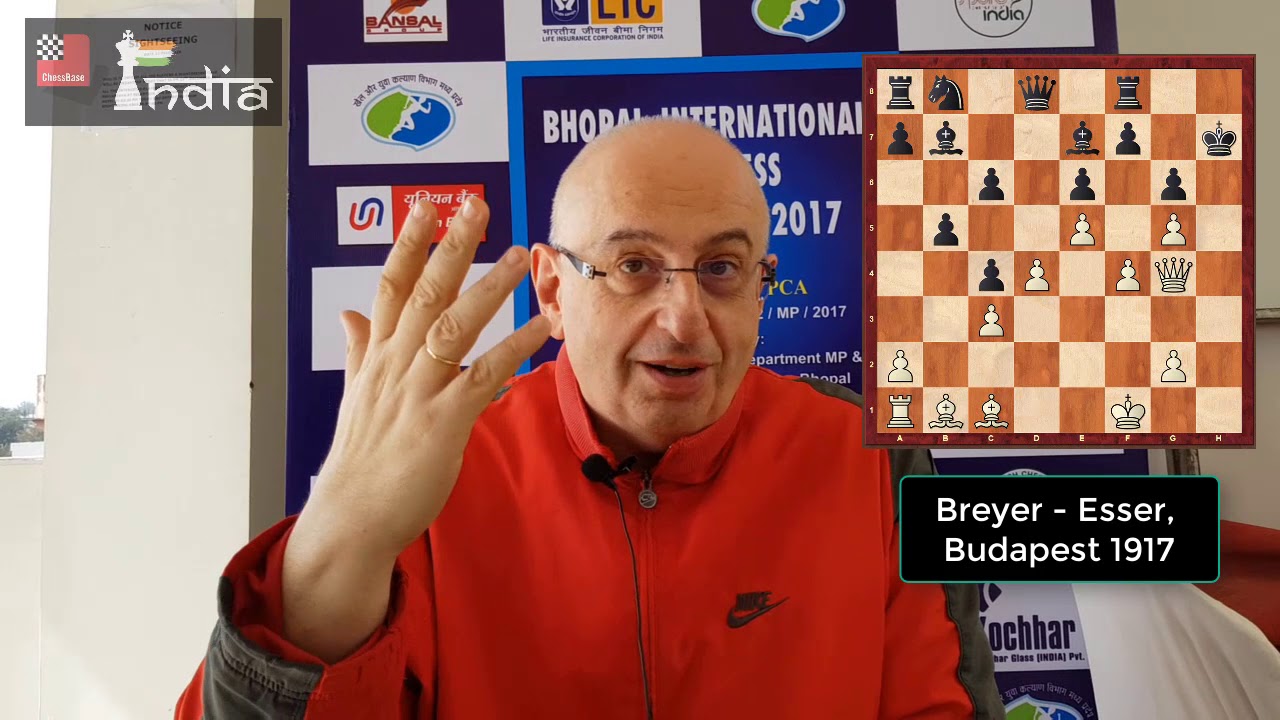



In this part of the review, I shall deal with standard features of the magazine. There are as many as 11 opening surveys ranging from the Spanish to the English Opening.
The essay on the Spanish by Krisztian Szabo features a sacrificial line in Steinitz Defence Deferred.
This line was introduced by the late Latvian grandmaster Janis Klovans [pictured right in 2005; he died in 2010] way back in 1961. His example was followed by the Ukranian grandmaster, Vladislav Shianovsky.
Both had to give it up after a few failed attempts with Black. It was the Tartar grandmaster, Valeri Yandemirov who revived the whole line. Yandemirov is no more, but the line lives on.
If you are a young e4 player and have just learnt the Spanish Opening, you really begin to wonder how you can withstand the attack on the king after seeing the spectacular analysis by Kristian Szabo in this issue. However, there is a slender chance and you can defuse the bomb.
 The essay on English Opening features a positional pawn sacrifice that made its debut in the second game of the Kasparov-Karpov World Championship Match, Seville 1987. The line invented by Igor Zaitsev, Karpov’s second came as a shock to Garry.
The essay on English Opening features a positional pawn sacrifice that made its debut in the second game of the Kasparov-Karpov World Championship Match, Seville 1987. The line invented by Igor Zaitsev, Karpov’s second came as a shock to Garry.
He thought for 83 minutes in the following position, calculating consequences. In the end he refused to accept the bait. But the pawn turned out to be a thorn in the flesh and he lost after a complex struggle.
Years later he decided to accept the pawn in a game against GM Sadvakasov (Astana 2001) and to his dismay, there was only a draw. Alexey Kuzmin also believes, there is little for White if he accepts the pawn as Black can regain it in a matter of moves. Perhaps that needs a second look:
Apart from these surveys, there are regular sections on opening traps, middlegame tactics and endings.
The Training section carries a demo lecture on the famous Lasker-Tarrasch, World Championship Match 1908 by Rogozenko.

I think the game needs more detailed treatment in view of the historical context
Photo: Unknown author [Public domain] via Wikimedia Commons
There is much else in this DVD that deserves to be explored. In all, there are 535 OTB games of which 133 are annotated. The commentators include Ian Nepomniachtchi, Mikhail Golubev, Peter Heine-Nielsen, not to mention regular contributors like Michal Krasenkow and Mihail Marin. A major contribution is made by Suat Atalik who has annotated 54 games.

Suat Atalik interviewed by ChessBase India
Recently I had occasion to listen to GM Atalik. He is a wonderful raconteur and commentator. He should be seen and heard, rather than read through annotations. Hopefully, we shall have his videos on the magazine. Atalik is followed by young GM Daniel Fernandez with 15 games.
This review ends on a melancholy note. GM Rainer Knaak, who edited this magazine for decades is retiring as Editor. He has passed on the baton to old ChessBase hands, IM Oliver Reeh and Dr. Steffen Giehring. Fortunately for readers, he continues to be associated with ChessBase family and his sage advice would still be available to players.